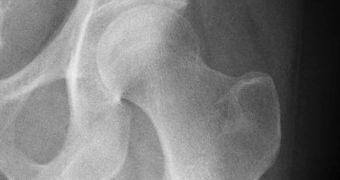When surgeons in modern operating rooms are faced with shattered bones, they do not have too many repair options. The most widely used method of treating the damage is to attach the various fragments to each other using small screws, which are left there until most of the bone heals by itself. They are removed afterwards, but traces of their presence still linger. Now, investigators propose using an adhesive derived from sandcastle worms, which apparently has the ability to glue two fragments together as effective as the screws, Technology Review informs.
According to the team that presented the idea at the latest annual meeting of the American Chemical Society (ACS), held in Washington DC, the new glue is strong enough to get the bone through the recovery period, and could thus become the surgeons' tool of choice in treating open fractures and shattered bones in the future. The challenge with similar compounds has thus far been the fact that it has proven to be immensely difficult to devise an adhesive that can stick bones and other wet materials, without it dissolving in the surrounding liquid.
Researchers from the University of Utah, led by biomedical engineer Russell Stewart, the lead researcher on the new study, found their inspiration in the tiny sandcastle worms. The annelids construct their tunnels on the ocean floor, using tiny grains of sand and bits of shells. These structures are set in place piece by piece, and cemented together in such a manner that they do not come apart.
“The worm has to overcome several problems when putting a sandcastle together underwater. Its adhesive has to adhere to wet surfaces, and when it's secreting that adhesive under water, it has to prevent it from just dissolving into the ocean. The worm has solved all of these problems, and we're trying to copy those solutions,” Stewart says. He adds that, while the glue is secreted as a liquid at first, it has to then become solid, and all of this happens underwater.
After a careful study of the worm, the team determined that the driving factor behind the solidification of the glue once it left the animal was the pH of the water. They say that seawater has a higher pH than the one inside the worm, and that this difference is what causes the adhesive liquid to slowly solidify. The team managed in the end to create a similar glue, which is soluble in water, but does not dissolve in the liquid. The experts say that it is at least as strong as Super Glue, but that they succeeded in making it two times more effective than the substance secreted by the sandcastle worm itself.
“There's a significant need in the clinic for better glues. Glues tend to be very messy, and surgeons have great difficulty manipulating them in wet environments. It's difficult to place them directly on the site of interest,” Brigham and Women's Hospital in Boston biological and chemical engineer Jeffrey Karp explains.

 14 DAY TRIAL //
14 DAY TRIAL //